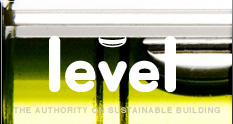Passive Design
Designing the building and the spaces within it to benefit from natural light, ventilation and even temperatures.
Thermal simulation
Simulation software measures the impacts of design decisions on the thermal performance a house.
On this page:
- Why simulation?
- AccurateNZ
- Sunrel
- IES-VE
- Sefaira
Simulation is the best tool available to try and understand what it would be like to live in a building that hasn't yet been built. Designing a house from scratch usually involves making compromises. Simulation tools can examine how different design decisions and compromises will interact to affect the results. Simulation helps designers understand how things work and provides information to make informed decisions.
The more sophisticated modelling programs provide hourly temperature data, which lets designers closely examine the passive performance of a house on a much more detailed level than just annual energy use. They also potentially show measurements that are more real to people's experiences, such as how cold it will get on a winter morning when a house’s occupants will be getting out of bed.
Why simulation?
Simulation has benefits in many areas:
- Complexity – these programmes give the ability to handle more complicated designs, and examine their details more closely.
- Understanding – every design is different. Interactions between multiple factors can be difficult to predict, and the only real way to understand and account for their effects is to simulate the physics of the interactions.
- Design for thermal experience – hour-by-hour simulation enables a designer to consider what it might be like to live in the house, and ask more sophisticated questions. What are the differences between rooms? Some might be hot and some might be cold. How hot or cold might they get? Mere measures of the annual building energy use obscure these issues, which may be quite important, especially for a passive house.
- Advanced technology – for those who want to use more sophisticated passive design elements and technology, such as Trombe walls, the only way to adequately account for their effects is to use a simulation package that supports them.
Here are brief introductions to a few of the simulation options available to New Zealand designers of residential buildings. The expected modelling time (in hours) for a house of low complexity is provided to allow comparison.
AccuRateNZ
AccuRate was developed by CSIRO (Australia’s national science agency). AccurateNZ is the New Zealand version of the software. Batch processing, where multiple variables are looked at simultaneously, is possible using a free companion program called AccuBatch. AccuRateNZ is fairly user-friendly and only needs a modest one-off license to operate. However, the NZ version has not been updated for several years. It is a very robust calculation engine. [3.5 hours].
SUNREL
SUNREL software was developed by NREL (a national laboratory of the US Department of Energy). It is quite flexible in the passive technologies it can model and includes algorithms for Trombe walls and programmable window shading. It is free to use but requires skill to use as the user interface is primitive. It is a very robust engine. [4 hours]
IES-VE
IES-VE for architects is produced by Integrated Environmental Solutions, a Scottish-based company that specializes in software programmes for designers and engineers. It has an easy-to-use interface but requires some learning. It is interoperable with many graphics-based interfaces, such as Sketchup, Revit and VectorWorks. It is comparatively costly. There are several packages to suit varied users. It is a robust engine. [3 hours]
SEFAIRA
Sefaira is a London-based company that specializes in software programmes for building designers. It was one of the first simulation companies to make use of cloud computing, rather than having a stand-alone program that users access. It is a very robust engine, the interface is very easy to use and there are useful and comprehensive results built in. It is highly interoperable with design packages. Sefaira is especially good for comparing options and optimization. It is comparatively costly. [2.5 hours]
Updated: 06 October 2022

